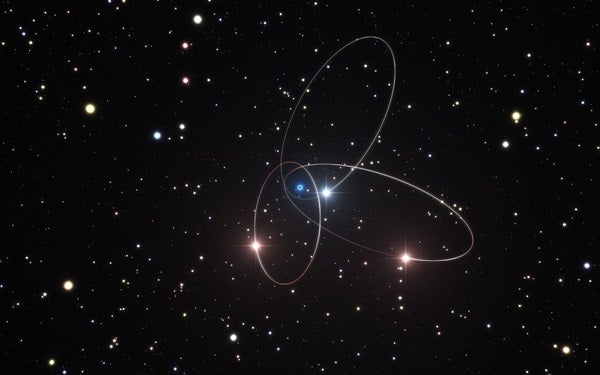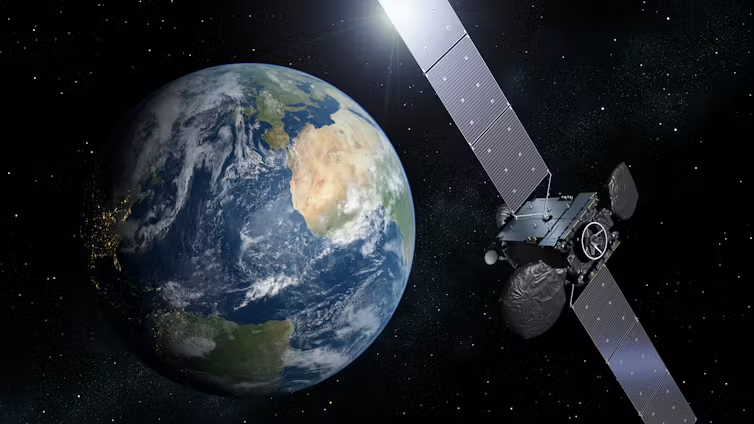The mounting evidence supporting Einstein’s theory of general relativity has been recently published August 9 in the Astrophysical Journal. That evidence consists of precise measurements of the motion of a star, dubbed S2, which orbits Sgr A* closely, and seems to be deviating from the orbit expected if it wasn’t affected by general relativity. This deviation indicates that Einstein’s theory is indeed in play.
S2 is one of many stars known to orbit Sgr A*, but specifically it is the star that comes closest to the supermassive black hole. That orbit brings it particularly close to the black hole every 16 years — an event that will take place in the middle of next year. As it passes through that region, S2’s orbit is expected to change as a result of the warping of space-time due to Sgr A*’s huge mass.
As 2018 approaches, S2 is already nearing that closest point. Astronomer Andreas Eckart of the University of Cologne in Germany is leading a team that has painstakingly compiled observations of S2 taken over more than 20 years to trace out its orbital motions. Although this data includes another close pass by the black hole 16 years ago, those observations were taken with instruments that don’t have the precision available today. That’s why the upcoming pass is so important — now, astronomers will finally have the resolution necessary to measure more definitively whether S2 is following a Newtonian orbit, which doesn’t take into account general relativity, or an orbit predicted by Einstein’s famous theory.
This artist’s concept shows the motion of stars close to Sgr A*, including S2.
Credit: ESO/M. Parsa/L. Calçada
Eckart’s team is already finding deviations in S2’s orbit that are “extremely close to the expected values” according to general relativity, he said in a press release. That’s good news for Einstein’s theory, which has held up to all previous tests, and looks like it will again pass with flying colors.
However, these results are only preliminary, and they’re still subject to significant uncertainty. Only continued monitoring as the star swings past the black hole next year will provide the precision necessary for a more confident measurement that will show whether general relativistic effects are truly at play near the massive black hole.
Those measurements will be taken with GRAVITY, a new instrument on the Very Large Telescope (VLT) array. Using this instrument and two of the VLT’s 8.2-meter (27 feet) telescopes, Eckart’s team will be able to produce images equivalent to those achievable with a telescope mirror 120 meters (nearly 400 feet) across; today, the largest telescopes available have mirrors 10 meters (33 feet) in diameter. Such high resolution could finally yield the measurements that will convince scientists once and for all that Einstein was right.










